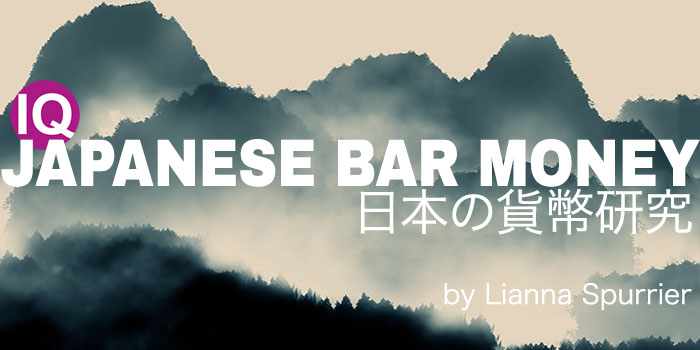
By Lianna Spurrier for CoinWeek …..
Information about early Japanese coinage can be difficult to find. It’s not a highly studied area among American numismatists, but some of the coinage is very unique and raises many questions. Take bar money, for example. Mainly minted in the 1800s, these thick and sharply cornered rectangular coins are unlike most currency from that era. How did they come about? How many different designs are there? These seemingly simple questions are difficult to answer with the limited information available online.
History
Japan started minting its own coins around 700 CE, heavily based on Chinese coinage. These first coins were primarily round and made of copper, with a square hole in the center and four characters on the obverse. To the untrained eye, they are almost identical to Chinese cash coins.
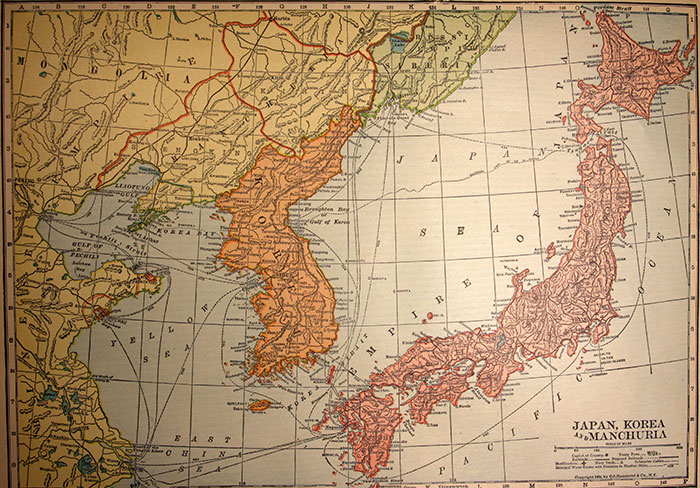 Japan introduced a trimetallic system in 1569, but precious metals weren’t coined originally. Instead, gold and silver dust were measured, then sealed into bags that were traded. This was clearly inconvenient, and both metals were ultimately coined into a variety of shapes.
Japan introduced a trimetallic system in 1569, but precious metals weren’t coined originally. Instead, gold and silver dust were measured, then sealed into bags that were traded. This was clearly inconvenient, and both metals were ultimately coined into a variety of shapes.
Commerce became based on the Ryo, a base unit known, when coined in gold, as a Koban. Both silver and gold were coined into Bu and Shu denominations; one Bu was 1/4 Ryo, and one Shu was 1/16 Ryo.
However, the precious metals market in Japan was different than in the rest of the world. They completely closed themselves off from the world from roughly 1639 until 1853, when Commodore Matthew Perry from the United States landed on Japanese shores. Through a series of unequal treaties that are largely seen as unfair to the island nation, their isolationism ended. On June 3, 1859, Japan’s ports were finally opened for trade.
Because Japan was a closed economy for so long, they ended up with a different coinage system than most of the world. They used a roughly 5:1 silver-to-gold ratio, while most countries had a 15 or 16:1 ratio. This led to a large outflow of gold after they opened their ports for trade.
In addition, their coinage took on some unusual shapes. By the 1800s, most Bu and Shu coins were rectangular with sharp corners. These are Japanese bar money.
Silver
As stated above, silver originally circulated as dust in measured, sealed bags. Around the mid-1500s, it began to circulate as bars, from which one would break off pieces. As time went on, these pieces were stamped by the silversmith who cut them, but even so, they had to be weighed for each transaction.
In 1600, the Ginza, or silver mints, were established. There were initially 10 officers of the Ginza, including Daikoku Joze, the engineer who oversaw most of the minting process. Silver coins then came to bear official inscriptions but continued to have irregular shapes and weights until the introduction of the first rectangular silver coin – the Meiwa Go Momme Gin.
It’s been suggested that the rectangular shape was intended to make counting them easier, as they could easily be placed into a grid. In addition, most circulating silver before this time was oblong, making the rectangle a closer approximation than a circle.
MEIWA GO MOMME GIN
The first silver bar-shaped coin in Japan was released in 1765 and continued through 1768. It was known as the Meiwa Go Momme Gin, or Meiwa-era 5 Momme Silver. A Momme was a unit of weight measurement, equal to roughly 3.75g.

They are also sometimes called Tanuma Go Momme Gin after Tonomo No Kami, the chief of the Palace Bureau. He ordered that all personally owned silver, particularly jewelry, be delivered to the government to be melted into coinage. This silver was most likely used to produce these coins.
The obverse is inscribed “Gin Go Momme”, meaning “Silver Five Momme”, within a raised rectangle near the bottom of the coin. Above it is a series of lines and dots for ornamentation. The reverse simply reads “Joze”, after the mint officer Daikoku Joze.
They are only 46% silver but were released with an official value of 1/12 Ryo. In commerce, they had a significantly lower value, which made them highly unpopular. Anyone who converted gold into Meiwa Go Momme Gin lost purchasing power. As a result, they didn’t see much circulation and were discontinued after only four years. Due to their short run, they’re very hard to find and highly valued today.
NANRYO GIN
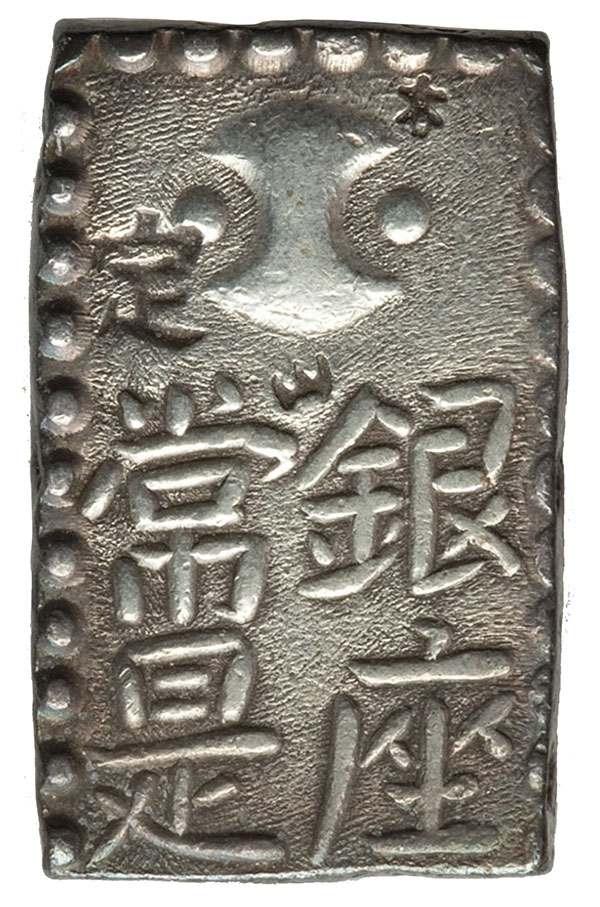 The Nanryo Gin was the Japanese government’s second attempt at a rectangular silver coin, and it was much more successful. These ran from 1772 through 1837 and saw three slightly different types. Even the name was an attempt to increase public confidence; “Nanryo Gin” means “High-Quality Silver”. With silver content ranging from 97.8% to 98.9% over the years, they lived up to their name.
The Nanryo Gin was the Japanese government’s second attempt at a rectangular silver coin, and it was much more successful. These ran from 1772 through 1837 and saw three slightly different types. Even the name was an attempt to increase public confidence; “Nanryo Gin” means “High-Quality Silver”. With silver content ranging from 97.8% to 98.9% over the years, they lived up to their name.
The obverse features two dense columns of Japanese writing that translate as “Take Nanryo eight pieces / to exchange for Koban one Ryo.” The hope was that writing the official value on the coin would encourage it to circulate at face value, unlike the Meiwa Go Momme Gin.
The reverse includes a Fundo, a symbol used to indicate an official weight. Beside it is a small incuse “Jo”, meaning “Guaranteed”. The rest of the inscription reads “Ginza” (the silver mint) and “Joze”.
It took until around the turn of the century for them to become popular, but once the public got used to the new design they became heavily used. The gold alternatives were the Koban, most of which were broken, or the inconveniently small Ichi and Ni Buban Kin. By the end of the series in 1837, they were so popular that the government had to start charging a fee to convert other coinage into Nanryo Gin.
ICHIBU GIN
The Ichibu Gin, or One Bu Silver, is one of the most common denominations of Japanese bar money seen today. They were minted from 1837 up until 1869 in fairly large numbers. One Bu was worth 1/4 Ryo in Japanese commerce.
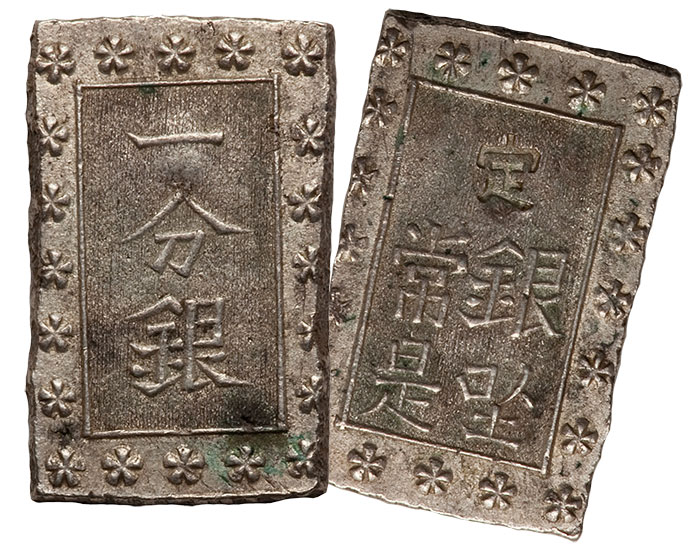 The obverse reads “Ichibu Gin”, or “One Bu Silver”, and the reverse includes the same text as the Nanryo Gin: “Jo”, “Ginza”, and “Joze”. Both sides have a border of sakura (cherry blossoms), which can be used to date them. On most examples, one flower on each side will be inverted, and the position of this flower can attribute it to one of three eras. Specific elements of the calligraphy can be used as well.
The obverse reads “Ichibu Gin”, or “One Bu Silver”, and the reverse includes the same text as the Nanryo Gin: “Jo”, “Ginza”, and “Joze”. Both sides have a border of sakura (cherry blossoms), which can be used to date them. On most examples, one flower on each side will be inverted, and the position of this flower can attribute it to one of three eras. Specific elements of the calligraphy can be used as well.
Originally, these coins were 99.1% silver, but when Japanese ports were opened in 1859 they debased them to exchange for foreign silver. By the end of the type in 1869, they contained only 80.7% silver.
After the opening of foreign trade, these coins began to pose a problem for Japan. An American could convert $4 into 12 Ichibu Gin, which could then be traded for three Ryo. That amount of gold was worth roughly $12 – three times the amount originally converted. This led to a major outflow of gold from Japan, and very high demand for Ichibu Gin to be used in the conversion.
ISSHU GIN
The Isshu Gin (One Shu Silver) circulated alongside the Ichibu Gin and played a similar role in foreign conversions, leading to very high mintages compared to earlier silver coinage.
Worth 1/16 of a Ryo, these have almost identical inscriptions to the Ichibu Gin, with the obvious exception of the inscribed denomination. They are smaller and have dots around the border instead of cherry blossoms, making the two easy to tell apart at a glance without inspecting the inscriptions. Isshu Gin were minted from 1853 to 1869, originally from 96.8% silver though later debased to 88%.
ANSEI NI SHU GIN
The Ansei Ni Shu Gin, or Ansei Two Shu Silver, was an attempt to prevent to outflow of gold caused by the opening of Japan’s ports. Sometimes called Boeki Ni Shu, or “Trade Two Shu”, they had a face value of two Shu, or 1/2 Bu. However, they contained approximately 11.5g of silver – one-and-a-half times as much as the Ichibu Gin. The idea was to increase the amount of silver needed to equal one Ryo to a similar ratio to the rest of the world.
They were released on June 2, 1859 – exactly one day before Japan’s ports opened. The obverse reads “Ni Shu Gin”, and the reverse saw the return of the Fundo symbol, alongside the now-standard “Jo”, “Ginza”, and “Joze”.
These coins were terribly unpopular. Other countries that had signed treaties with Japan disliked the coins, as did merchants. They failed to circulate and were discontinued before the end of the year, making them very rare today.
Gold
Gold also came to be coined after originally being traded as dust in bags. Gold ingots were beaten into thin ovals for trade, which evolved into Oban and Koban coins starting in 1585. The Koban was more or less the functional equivalent of the American dollar – it was the base of commerce. However, these coins were extremely thin and easily broken.
The Kinza (gold mints) opened in 1600 to serve as the center of production for gold coinage. The governor of the gold mint was Goto Shozaburo Mitsutsugu. His name and signature later appeared on many gold coins as the position was passed down through his descendants.
ICHIBU BAN KIN
The first rectangular gold coin was the Ichibu Ban Kin, or One Bu Size Gold, introduced in 1599. This was long before any of the other forms of Japanese bar money, and it’s uncertain why it originated. Regardless, it circulated all the way through 1869 with a whopping 16 different varieties.
However, the overall design remained consistent throughout the years. Both sides are bordered by raised dots, and the obverse reads “Ichibu” (One Bu), with Kiri crests above and below. These crests represent the flower of the Paulownia tree, the symbol of the Office of the Prime Minister of Japan. The reverse features the signature of Mitsutsugu.
Over the years, they became smaller and were debased, from 85.7% to 57.4% gold. Even with such a long mintage, all varieties of these coins are rare today.
NI BU BAN KIN
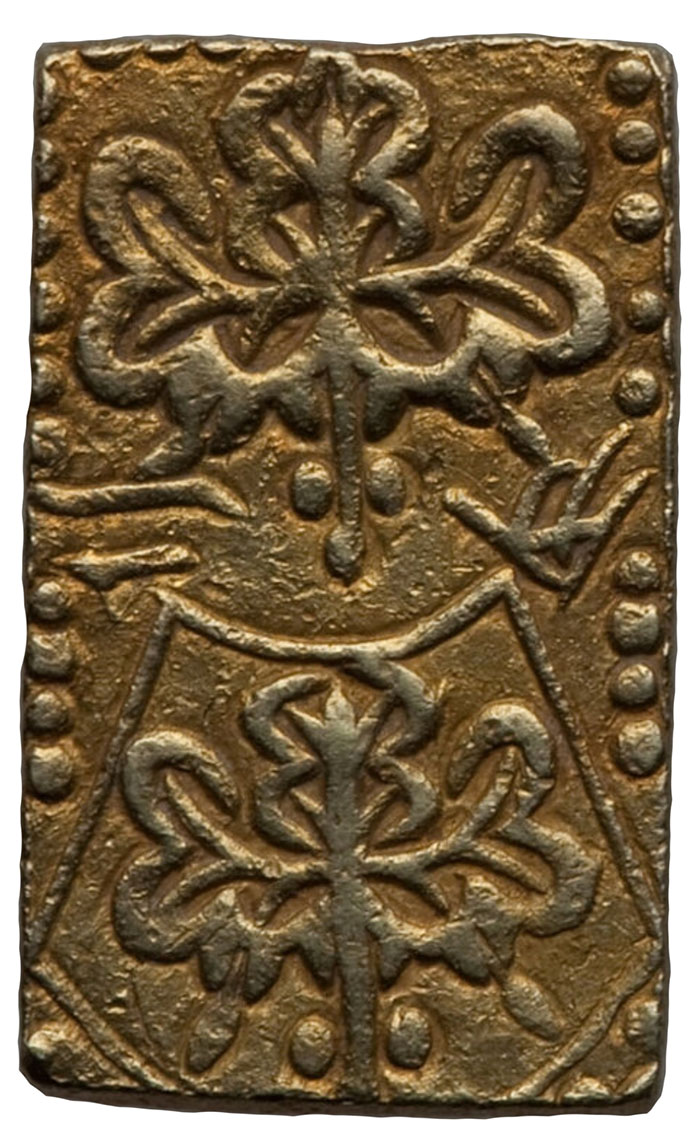 Released in 1818, the Ni Bu Ban Kin (Two Bu Size Gold) was intended to make commerce easier. Most of the Koban coins in circulation by that point were broken, and this thicker, stronger rectangular coin was meant to replace them. Damaged Koban coins could be converted for free, provided they weren’t missing too much of their gold content.
Released in 1818, the Ni Bu Ban Kin (Two Bu Size Gold) was intended to make commerce easier. Most of the Koban coins in circulation by that point were broken, and this thicker, stronger rectangular coin was meant to replace them. Damaged Koban coins could be converted for free, provided they weren’t missing too much of their gold content.
However, people were not satisfied. The Ni Bu Ban Kin consisted of lower quality gold and was generally seen as a less reliable coin, so they didn’t see wide circulation. They started with 56.3% gold but were debased to only 22.3% by 1868.
In design, they are almost to the Ichibu Ban Kin. They are larger, of course, and have the denomination “Ni Bu” inscribed on the obverse, but all other elements are the same. These were minted through 1869 with four major varieties, the last of which is fairly common.
NI SHU BAN KIN
The Ni Shu Ban Kin (Two Shu Size Gold) is another gold coin seen commonly today. They were first minted from 1697 through 1710, then again from 1832 to 1869 with a break in 1859. Originally low quality at 56.4% gold, they were introduced in 1832 with only 29.8% gold and then debased further. They are very small, and the time of issue is distinguished by weight.
Again, the design is virtually identical, with the exception of the denomination. Gold bar money was fairly consistent in its design, if not its gold content.
ISSHU BAN KIN
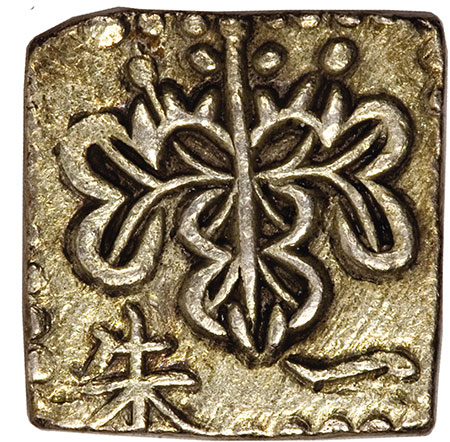 The Isshu Ban Kin (One Shu Size Gold) is the only square coin included in this series. Minted from 1824 to only 1832, they contain 12.3% gold and 87.7% silver. It replicates the design of other gold coins as closely as possible in its shape; the obverse contains one Kiri crest and “Ichi Shu”. The reverse reads “Mitsutsugu”. Although less rare than some other gold issues, these are the odd duck of Japanese bar money.
The Isshu Ban Kin (One Shu Size Gold) is the only square coin included in this series. Minted from 1824 to only 1832, they contain 12.3% gold and 87.7% silver. It replicates the design of other gold coins as closely as possible in its shape; the obverse contains one Kiri crest and “Ichi Shu”. The reverse reads “Mitsutsugu”. Although less rare than some other gold issues, these are the odd duck of Japanese bar money.
FURTHER READING
Little information is available in English on these coins. Values are best obtained by looking at past auction records or current offerings, and the only definitive published English resource is David Hartill’s Early Japanese Coins, though even this focuses more heavily on copper coinage. Chances are that there are many more stories to be told by this unique series of coins, but only in-depth research will have a shot at revealing them.
As for collecting Japanese bar money, a standard “set” would focus on the four most readily available issues: the Ichibu Gin, Isshu Gin, Ni Bu Ban Kin, and Ni Shu Ban Kin. For the determined or deep-pocketed collector, a full set including each major variety described here would prove a satisfying challenge.
Regardless, this series is a very interesting and unique illustration of the effects of Japan’s isolation.
VOCABULARY
- Ichi – One
- Ni – Two
- Ryo – Base denomination of commerce
- Bu – ¼ ryo
- Shu – 1/16 ryo
- Gin – Silver
- Ginza – Silver mints
- Joze – Officer at the silver mint
- Jo – Guaranteed
- Kin – Gold
- Kinza – Gold mints
- Mitsutsugu – Officer at the gold mint
- Ban – Size




